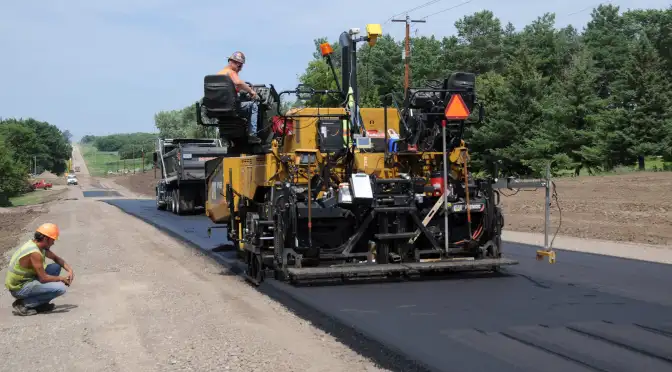Local agencies in Minnesota use cold recycling technologies for flexible pavement rehabilitation because of their economic and environmental benefits. The three main methods are cold in-place recycling (CIR), cold central plant recycling (CCPR), and stabilized full-depth reclamation (SFDR).
The recycled layers contain reclaimed asphalt pavement and aggregate base (in the case of SFDR), stabilized with asphalt emulsion or foamed asphalt and optionally active fillers (cement or lime). Due to the composition of these mixtures, they behave as partially bonded (between granular base and hot-mix asphalt) materials. Currently, this material behavior is inadequately characterized, resulting in overdesigned pavement structures.
“There is no way to know if a stabilized reclaim material will rut in the first few months after construction. This project should determine what the material properties should be in the mix design process using existing hot-mix asphalt (HMA) material, new add oil, and additives to eliminate early rutting and keep its flexibility,” said Timothy Andersen, MnDOT Material and Road Research. “The thickness of the HMA layer that is placed on top of the stabilized material can be reduced if there is a low chance of rutting.”
Objectives
This project will identify ways to improve current design methodologies to appropriately characterize and evaluate cold recycled pavement layers, which will result in more efficient pavement designs and lower agency construction costs.
As part of this study, researchers will use a combination of in-situ measurements and lab testing to develop mechanical property prediction models for pavement design processes with necessary property inputs for CIR, CCPR and SFDR layers. The models will use information such as mix design construction features (e.g. density) and climatic data to estimate the mechanical property of cold recycled pavement during different seasons. The study will incorporate pavement distress data from field projects, as well as sections established within the 2023 construction season, to develop performance transfer functions.
Project Details
- Estimated Start Date: 11/23/2022
- Estimated Completion Date: 11/30/2024
- Funding: LRRB and MnDOT
- Principal Investigator: Eshan Dave
- Co-Principal Investigator: Jo Sias
- Technical Liaison: Timothy Andersen
Details of the research study work plan and timeline are subject to change.
To receive email updates about this project, visit MnDOT’s Office of Research & Innovation to subscribe.

